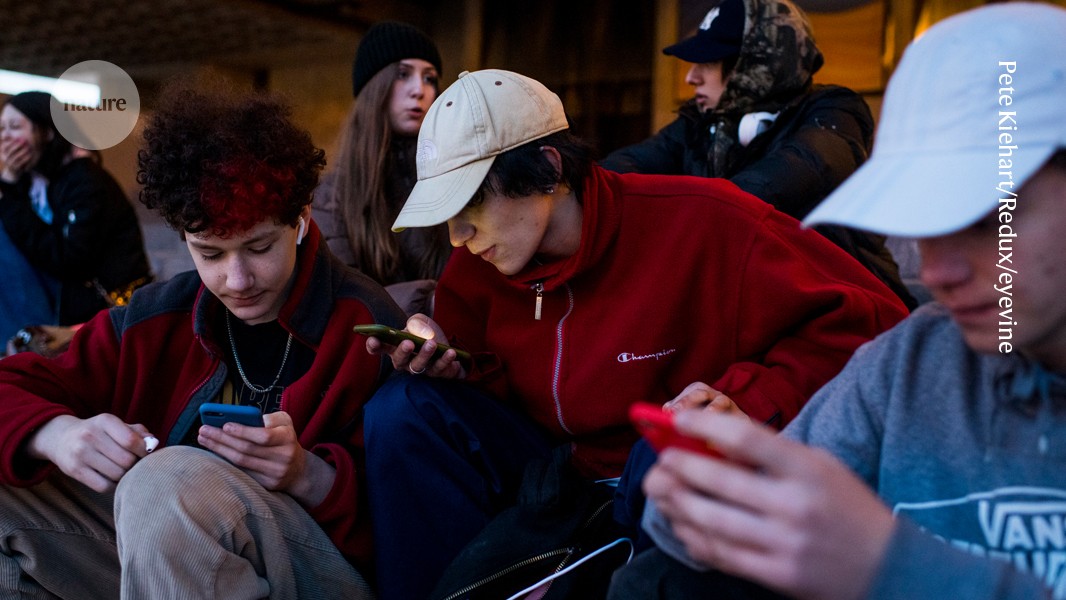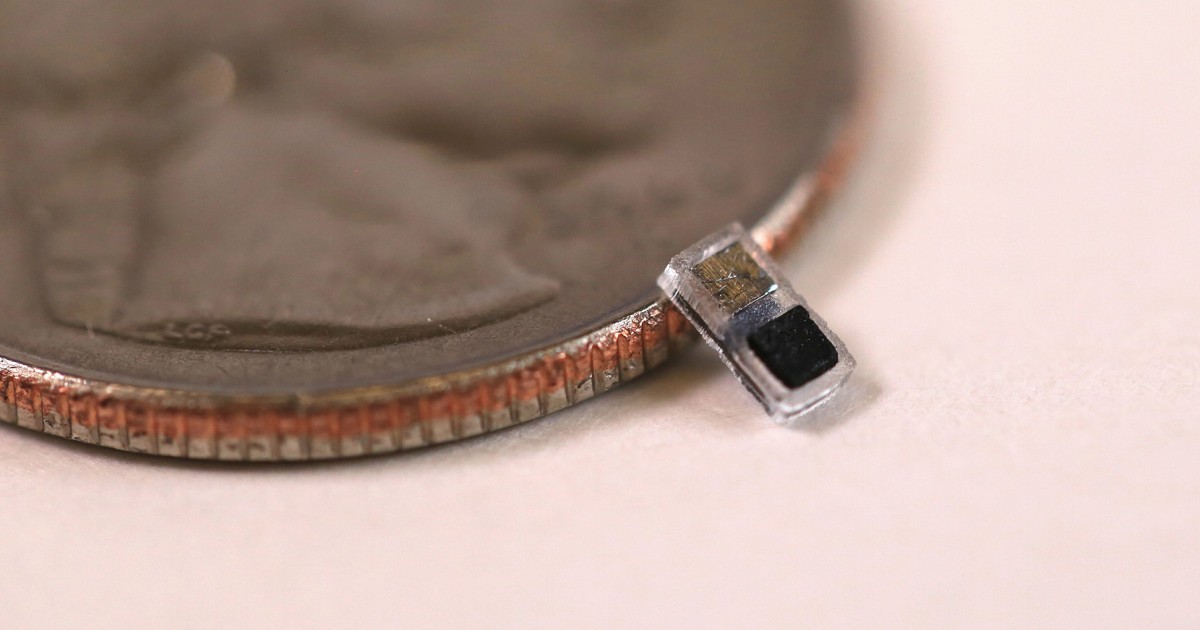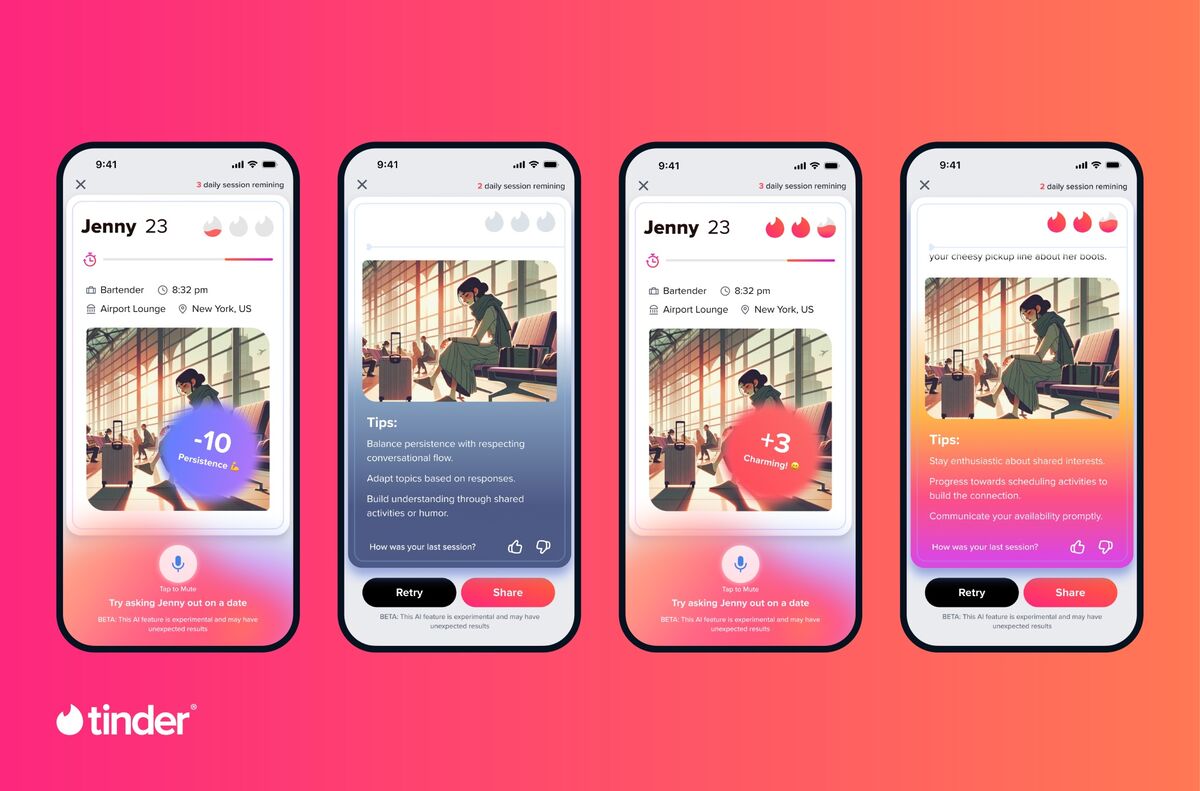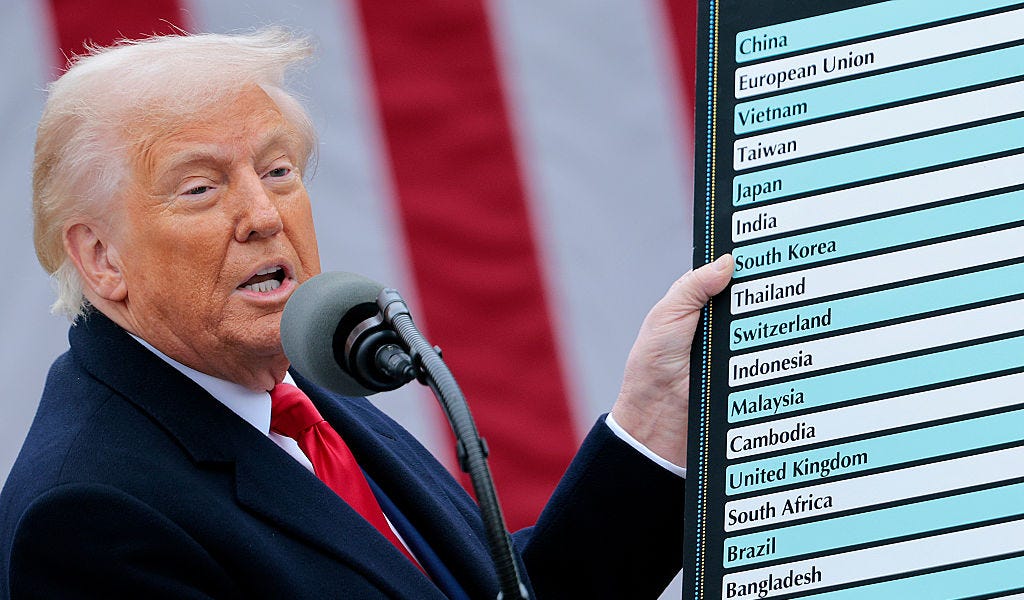- Arvind's Newsletter
- Posts
- Arvind's Newsletter
Arvind's Newsletter
Issue No. #1093
1.US President Donald Trump’s long-awaited tariffs marked the most drastic reimagining of global trade in generations, sparking fury abroad and sending stock markets plummeting.
US President Donald Trump’s announcements of the punishing levies ripped through markets and left governments around the world searching for answers. Stocks and dollar dropped, bonds and gold jumped. Haven assets surged and weaker markets floundered.
The biggest loser? The US itself, where stock futures tumbled more than 4%. China and the European Union said they would retaliate — largely ignoring US Treasury Secretary Scott Bessent’s plea to take a beat and let negotiations take their course.
The moves, combined with Trump’s previous import taxes on autos, Canada, Mexico and China, will push the average effective US tariff rate to 23%, from 2.3% in 2024, according to Bloomberg Economics. That’s more than the 1930 Smoot-Hawley tariffs that many economists say worsened the Great Depression, and the highest average US tariff rate in more than a century.
The levies
The tariffs make little distinction between allies and adversaries. The administration claims they are based on other countries’ trade barriers against the United States. In reality, the levies are based on how much more another country exports to America than imports from it, Tony Romm, Ana and Lazaro Gamio wrote. The difference between exports and imports doesn’t necessarily reflect trade barriers; Americans may simply want to buy more stuff from, say, Japan than the Japanese want to buy from the United States.
This chart shows the levies on some of America’s biggest trading partners. (The new levies exclude Canada and Mexico, which already face separate tariffs.)

Practically speaking, the chart shows that Americans will now pay more for goods from other countries. If companies pass the tariffs on to consumers — and they almost always do — a $20 pack of beer from Germany will cost $24. A $100 bike from China will cost around $130. A $400 video game console from Japan will cost nearly $500.
The levies are in addition to past tolls, such as those Trump placed on China. They exempt some goods, including some forms of energy, pharmaceuticals and things that Trump had already tariffed, particularly cars, steel and aluminum. Overall, though, they amount to a huge tax on some of America’s biggest trading partners.
2.Trump tariffs live: US stocks plunge on fears of economic hit from tariffs
The S&P 500 fell 4.3 per cent in morning trading. The Nasdaq Composite tumbled 5.6 per cent, dragged down by an 8 per cent fall for index heavyweight Apple.
The dollar was down 2.4 per cent against a basket of rivals, on course for its biggest daily decline since 2015.
Brent crude, the global oil benchmark, was down 7 per cent at $69.71 a barrel. WTI, the US benchmark, fell 7.6 per cent to $66.29 a barrel.
3.US tariff move on India: What leading brokerages say
The US President Donald Trump on Wednesday imposed a 26 per cent reciprocal tariff on India and even higher duties on dozens of other countries. The sweeping global tariffs are expected to upend global trends and adversely impact several domestic sectors, from information technology to automobiles. Here are key takes from leading brokerages:
HSBC: India received a hefty 26 per cent reciprocal tariff, which arithmetically may shave off up to 50 basis points (bps) from growth this year. However, given that pharmaceuticals, a key Indian export to the US, were largely exempted from the reciprocal tariff, the impact could have been larger. We also note that India is currently in the process of negotiating its first tranche of an eventual free trade agreement (FTA) with the US and can offer concessions such as purchasing more US oil and defence goods (at the expense of Russia), as well as lowering tariffs on agricultural products and electric vehicles. From a positive perspective, trade risks may provide the catalyst for India’s much-needed reforms, including slashing tariffs, hastening trade agreements, opening up to regional foreign direct investment, and making the rupee more market determined.
Jefferies: Reciprocal tariff announcements come across as a relief, as there is no incremental adverse impact on large exporting sectors like information technology services, pharmaceuticals, and automobiles. Also, the 27 per cent tariff on India is looking reasonable from a relative perspective. Bigger worries are on a weaker US economic outlook, which is a negative for information technology services and other exporters. Incrementally, we would look to buy the dip, especially on pharmaceuticals. The key risk to this view is a prolonged global risk-off. Read on for other brokerage views.
4.Apple and other US tech groups hit as Donald Trump targets supplier
Donald Trump’s sweeping tariff regime threatens upheaval for Apple, Amazon and other US companies that rely heavily on manufacturing in China and other countries now targeted for extra levies.
The US president’s extra tariffs, due to come into effect within days, impose a universal 10 per cent levy on all countries. But they are much steeper for many of the Asian countries whose factories are deeply embedded in supply chains relied on by US multinationals.
China faces a “reciprocal” 34 per cent tariff, Trump said, on top of a 20 per cent tariff he has already imposed. Taiwan faces a reciprocal tariff of 32 per cent, although semiconductors, a geopolitically critical export, are exempt for now.
Vietnam and India — which have also become important production centres for the likes of Apple — face reciprocal tariffs of 46 per cent and 26 per cent, respectively.
The tech sector “will clearly be under major pressure on this announcement [over] worries about demand destruction, supply chains and especially the China and Taiwan piece of the tariffs”, Ives noted.
Technology companies were among the hardest hit in the initial market reaction, with contracts tracking the Nasdaq index down 4 per cent. Shares of Apple fell 7 per cent in after-hours trading on Wednesday, while Amazon slid about 6 per cent.
5.Do smartphones and social media really harm teens’ mental health?
Parents are worried about their teenagers’ smartphone use.
There’s a book perched near the top of The New York Times bestseller list about what’s wrong with kids today. The Anxious Generation (2024), by psychologist Jonathan Haidt, argues that increasing time spent on smartphones and social media, at the expense of play, is rewiring the brains of children and adolescents and driving soaring rates of mental illness. It leapt to the top of the bestseller list when it was released a year ago and has sat there ever since.
The book reinforced an acute concern among many Western parents about the time that their children spend on smartphones and other screens. In a 2024 survey, nearly half of US teenagers said they were online almost constantly, compared with 24% a decade earlier (see ‘Constantly online’), and one-third used social-media sites such as YouTube almost all the time. Parents are troubled by this technology because “it’s new, it’s different, and it’s not the way that they were raised”, says psychologist Sarah Coyne at Brigham Young University in Provo, Utah.
Although researchers agree that adolescents are struggling with mental health, there is fierce debate about how much phones and social media are to blame. Some scientists say the copious research done so far does not show a large effect of these technologies on teenagers’ psychological health. “Science to date does not support the widespread panic around social media and mental health,” says Candice Odgers, a psychologist at the University of California, Irvine, who has criticized Haidt’s conclusions. Read on. (As an aside, Anxious Generation is the book I am currently reading.)
6.The World's Smallest Pacemaker
Scientists at Northwestern University announced yesterday they have developed the world’s tinniest pacemaker—smaller than a grain of rice—that can be inserted with a syringe. The device could revolutionise heart surgery, offering a minimally invasive way to regulate the essential organ.
Pacemakers are small, battery-operated devices that assist heartbeats with irregular rhythms by sending small electric shocks to help the heart beat normally. The devices can be permanent or temporary, with insertion and removal surgery posing potential risks. The new invention, years from being tested on humans, is activated by infrared light pulses from a wearable device and dissolves after the patient no longer needs it.
Its small size is partially due to its power source, a galvanic cell, which is a simple battery that uses the body’s fluids to convert chemical energy into electrical energy. The pacemaker could be especially effective in helping children with congenital heart defects who require temporary pacemakers after surgery.
Experts say the breakthrough in technology opens up possibilities for use in bioelectric medicines, including healing wounds and blocking pain.
7.Would you flirt with a chatbot?
Match Group Inc.’s Tinder unveiled an in-app game that invites users to flirt with artificially intelligent chatbots, part of a larger effort to return the dating app to growth by boosting user engagement.
Part proof-of-concept, part marketing stunt, the free voice-based game uses OpenAI’s GPT-4o and GPT-4o mini models to generate short, highly exaggerated rom-com scenarios. Think: a stranger reaching for the same shopping basket at a grocery store, or someone whose luggage got switched up with yours at the airport baggage claim.
In talking to the bot, which initiates the scene, users can accumulate points for warmth and curiosity, receive real-time feedback on their responses and ultimately “win” the game if the AI character verbally agrees to a date. Plays are limited to five per day and about three minutes at a time. For now, at least, the feature is a limited-time offering for iOS users in the US.
8.Beatles Biopics Reveal Cast, 2028 Release for All Four Sam Mendes Movies
Sony‘s long-awaited Beatles movie biopic plans are finally coming together.
Director Sam Mendes took the stage at CinemaCon in Las Vegas to reveal the cast for the features and said that all four films are set for theatrical release in April 2028. The surprising plans to make four films — one for each member of the famed band — were first announced last year.
Drumroll, please: Mendes also brought the cast onstage. Set to star in the films are Paul Mescal as Paul McCartney, Harris Dickinson as John Lennon, Joseph Quinn as George Harrison, and Barry Keoghan as Ringo Starr. Each of the four movies will focus on one of the members of the Fab Four.
9.Tyler Cowen: ‘Liberation Day’ Was Even Worse Than Expected
“In any case, we will be moving into a future with higher prices, less product choice, and much weaker foreign alliances. The tanking of the stock market, and other possible asset price repercussions, may tip America into recession and increase joblessness.
This is perhaps the worst economic “own goal” I have seen in my lifetime. I cannot think of any credentialed economist colleague—Democrat, Republican, or independent—who would endorse it. And I haven’t even mentioned the risk that some foreign nations will retaliate against American exporters, damaging our economy all the more.
You might think there is something to be said for a reciprocal approach to tariffs. Usually it consists of cutting off your nose to spite your face, but if it can sometimes work it requires a president (and Congress) who is predictable and trustworthy.
That is not how foreign nations view the current administration.
If you are wondering about the trade treatment of Canada and Mexico, that remains cloaked in mystery. The threatened 25 percent rate on those two nations, from earlier in Trump’s second term, violates the NAFTA redo that was negotiated by Trump himself. Why trust in reciprocity here?
And yes we are getting government by AI (kudos to Rohit!), but someone didn’t write the proper prompt.








